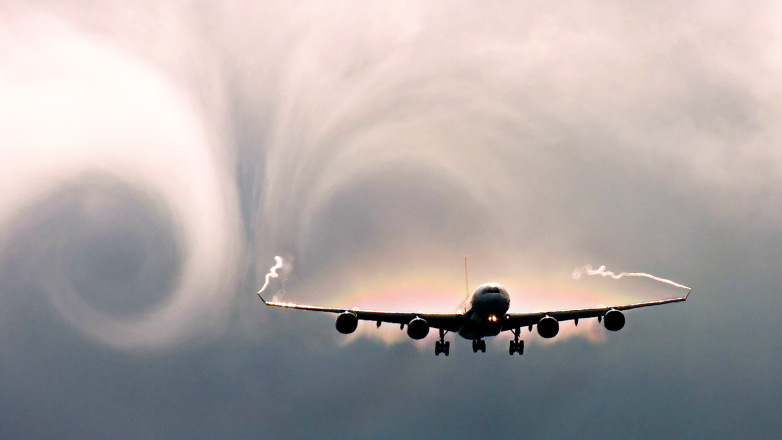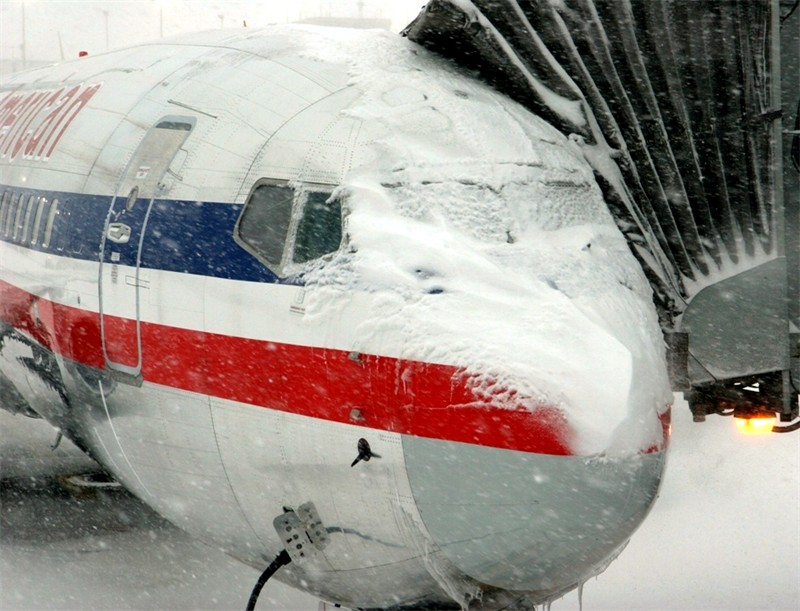Know Your Ramp from Your Apron
All Airports – and I mean all Airports – have the same Airport Areas. These are defined by ICAO and are created as such so they can be controlled. And by controlled we mean access control by passengers, staff, and approved vehicles.
In this article you will find the correct names and descriptions for each area, how access is controlled and why. You’ll also learn the basic access methods, who gains entry to the areas and the training you might expect to get to gain access.
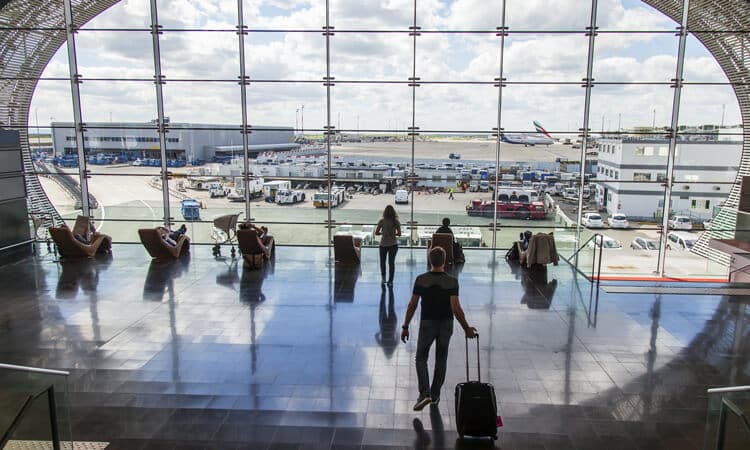
Airport Area
This is a companion piece to the different vehicles you will come across and get trained on if you work at the airport, especially the ramp.
NB – your airport might change the names slightly for these areas, we are using the US/EU names and so please drop us a note below if you spot any differences.
SRA (Security Restricted Area)
To best describe the Aerodrome areas, it’s best to start in the middle. And in the middle is what we call the SRA or Security restricted area. The reason we divide the airport into sections is partly due to Security and the purpose is simple.
We want only departing passengers, staff and crew and other certified persons to be allowed to gain access. When you take a trip, and you’ve checked in, your next stop is the Security Check point, or “screening” area. This is your access to the SRA.
Now picture an imaginary RED LINE on one side of that check point that continues through the airport, all the around the buildings, fences, runways, and taxiways, back to the other side of the check point. This defines the SRA.
Besides the passenger checkpoint, there are other SRA entry points. There’s one for flight crew. There’s staff access and airport vehicle access we call “Checkpoint Charlie” gates. Where all vehicles gain access to the airport.
Landside Buildings
This is everywhere before the SRA Red line. So, if we reversed your journey, the Landside would consist of the airport terminal. The area just before the SRA where you kissed your girlfriend goodbye, the check-in desks where you dropped off your bag, the arrivals hall all the way back to the curbside where you were dropped off.
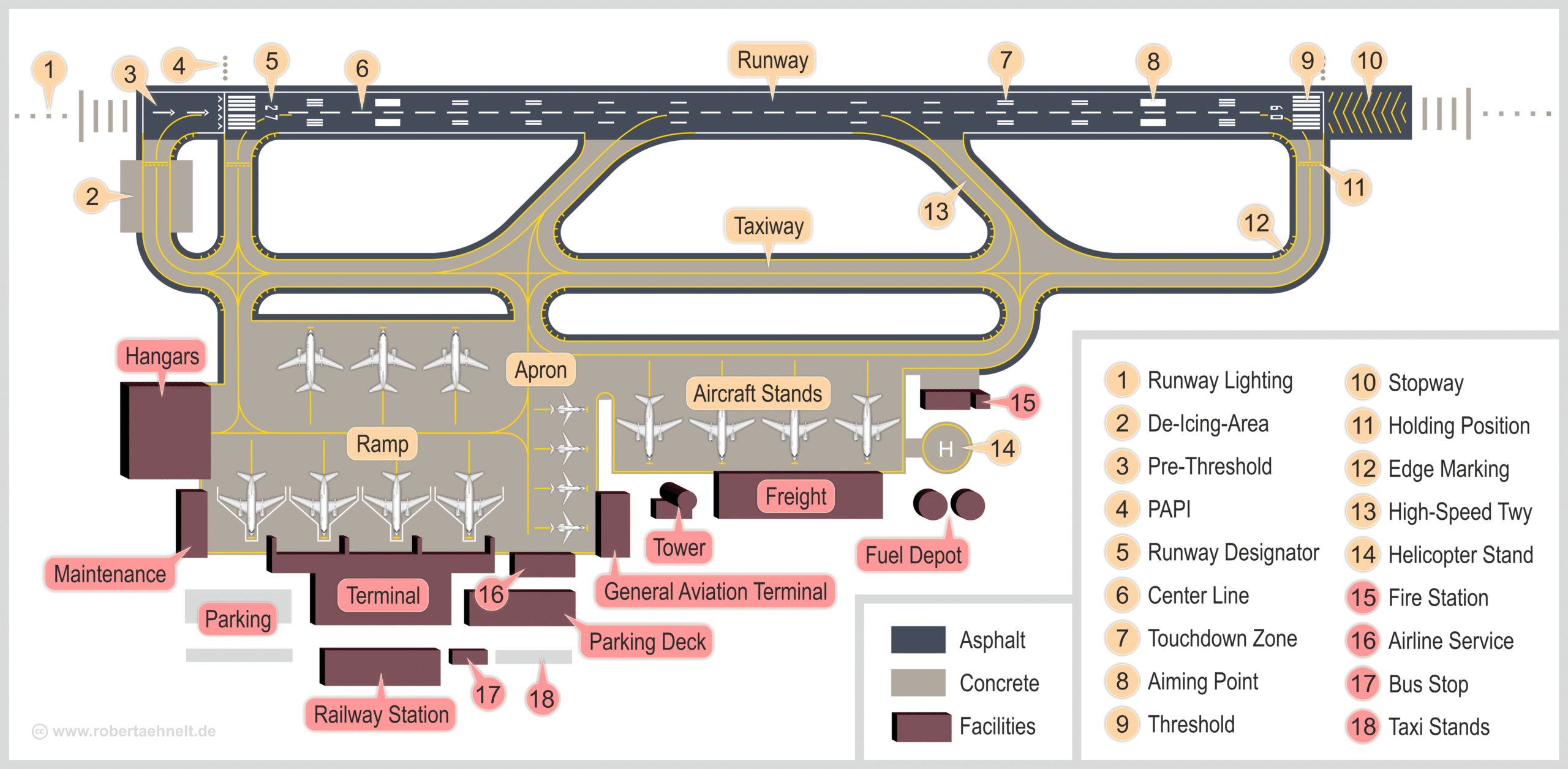
If we look at this entire area from a security standpoint, it is the least restrictive with everyone being able to access this area and with policing and security being mostly passive. You are very much on land.
Airport Airside
As you guessed, Airside is officially called the Security Restricted Area. You must be a passenger with a valid boarding pass, a crew member with an airline ID or a staff member with a valid AIC Card. There are other people who gain access here, but more on them later.
In addition to the pass/ID, you have not brought any items with you that are a threat to others or the aircraft. If you were, your journey would have ended at the SRA.

Fun, easy and effective language courses designed by language experts.
Learn 41 languages from your native language.
Anytime, anywhere, on any device.
Airport Shops
But you look like a normal person so let’s continue Airside! Past the duty-free shop with Toblerone’s and Chanel No.5, past the bars, cafes, and restaurants and commercial services down to the gates, where your access in now further controlled.
When your flight is called you proceed to boarding and the obscenely pleasant Delta Air Lines staff let you through into the CPSRA or Critical Part of the Security Restricted Area. The CPSRA is further controlled because we really want to validate people who can access the physical aircraft operations, or runway and this is limited to airport crews only. But as a passenger you are still Airside, even when you get to your seat.
Ramp/Apron & Runway
Everything outside the SRA, CPSRA but between the buildings and the taxiways is the Apron. Or “Ramp”. Normally this is the area directly outside the terminal building and around the aircraft but stretches across the airfield.
For example, there could be a string of MRO (Maintenance repair & Overhaul) hangers on the far side of the airfield, where staff ferry to and from their aircraft, this is still technically the Apron, especially as aircraft are towed to and from these areas frequently.
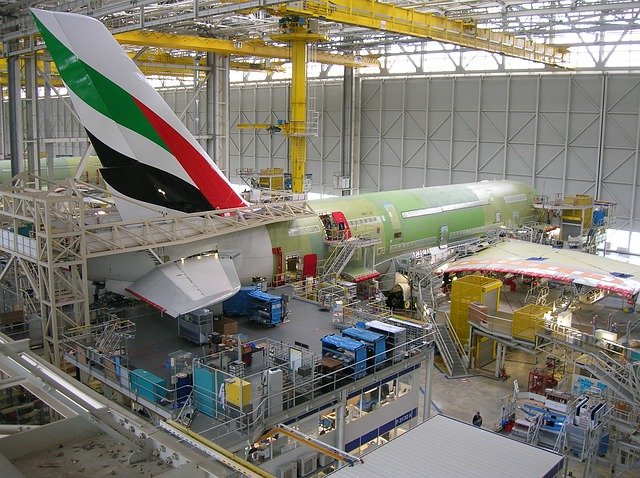
When you do move, either by vehicle or aircraft, you will use active taxiways and would need to be in an approved vehicle (marked, radio equipped, lights) that is under ground control. There are also remote parking stands or areas, you know the ones, way out in the back of beyond and you must get a bus into the terminal building. Still the Apron.
Airport Demarcated Areas
These are unique and can be changeable. They can sometimes be “imaginary” areas within the airfield and Ramp areas or remote stands. If you want an aircraft to be under a separate set of restrictions or rules (or the owners want special conditions at an international airport), then you’ll use a demarcated area so the airline (or you) can apply restrictions on the aircraft. Sounds weird so let’s use an example.
The Presidents’ Air Force One lands at an airport in Paris. They won’t roll up to a jet way like a normal aircraft, neither will they be subject to annoying European rules and regulations as a sovereign state operated aircraft on diplomatic duty.
So, they send it to a remote stand and create a virtual “ring” around that stand. Inside that ring, or demarcated area, the military operations can do whatever they like (within reason), and the airport’s only responsibility is monitoring them and their behavior.
Airport Area Access Control
Airport crews can enter the SRA via passenger access, or through ID controlled Doors or via their own building which could be airside. But they must have a valid ID and a reason to be there. There must also be a screening point where they gain access.
If they have tools or equipment, this must be approved and checked by screeners. We use the same technology on staff as we do passengers and sometimes more. That staff member has already been background checked, police checked, and intelligence checked. They are also subject to random drink and drug checks.
If they are in an airport vehicle, they are subject to checks at entry points. They exit the vehicle, and both are checked over by staff, including areas of the vehicle known only to security staff and constantly randomized.
International Airports
Airport crews do Airside training as well as security training and airside runway driving training. Therefore, each airport has its own training course with many practical elements. When you walk or drive around the apron, you are sharing the roads and apron areas with billions of dollars of aircraft and airport ground equipment.
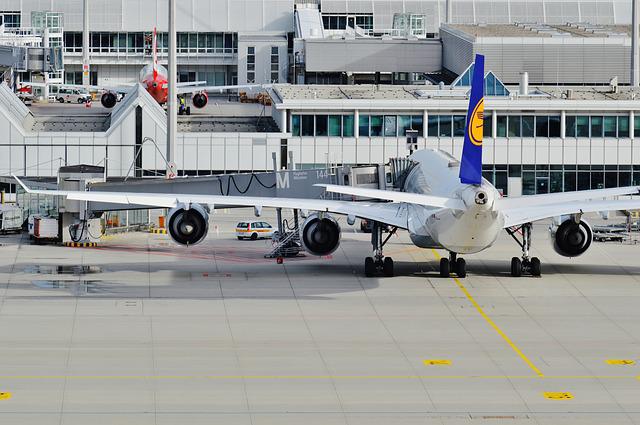
There are also high-powered ground units (GPUs and ASUs) as well as fueling trucks and high torque pushback trucks. Every other day on twitter you will see someone that has backed his catering truck into the wing of a B737Max.
And we can tell you exactly how much that cost, as it happened to our client. The full repair was USD $1,225,000 just for the wing repair. The jet was out of action for 3 months, which costs three times the repair. The driver was shown the airport door.

Fun, easy and effective language courses designed by language experts.
Learn 41 languages from your native language.
Anytime, anywhere, on any device.
Aircraft Special Access
There are other people who can access the SRA, CPSRA and anywhere on the airfield should they wish to do so. For example, your aviation authority (FAA, UK CAA) staff can go out there unannounced to check on airlines, pilots, or aircraft operations.
They sometimes go there to see if they can gain access to aircraft without being stopped. So, if you see someone you don’t recognize, without an ID or seems not to belong, you need to confront them and call the Police. You could lose your job if you don’t.
As alluded to earlier, some diplomatic staff have Airport ID’s that allow them direct access to their own jets, but they are subject to screening unless they have state issued dispensations. Which happens a lot.
International Airport Areas
Finally, there are First Responders. Fire crews are already on site at the Airport fire house, but other fire crews and ambulance crews can be allowed onto airfields without passes or screening in the event of an emergency. Same goes for Airport police, local law enforcement and Federal or state agents. But again, they need to have a reason to do this.
No one, and I mean no one, can abuse their ID or Pass to gain access when they don’t have an operational need to do so. If you used your ID and staff vehicle to collect Aunt Jinne off that A380 from Dubai, you would be in a whole mess of trouble. Same way if you used your airport ID to jump the queue at Screening.
Terminal Buildings
This was a good overview, and it can vary how the airport sets up its SRA and access points. But these are the basic building blocks. There are also a variety of other courses that you can take if you are working on the ramp, besides Airside Safety and driving.
IATA and ICAO both have good courses but one we like is called “Close Proximity”. This gives the trainee an awareness of aircraft and the metal bits that you could bump into and damage. And it teaches you how to avoid these areas to save you and the airline a lot of heartache. And we mean a lot.

